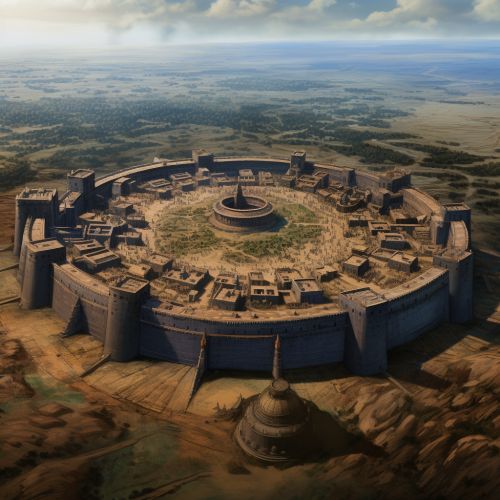Ur
History
Ur was an important city-state in ancient Sumeria, located in the southern part of what is now modern-day Iraq. The city dates back to the Ubaid period (ca. 6500 to 3800 BC), and it remained a significant center of Sumerian culture until its eventual decline around the 6th century BC.


The city's name, Ur, is derived from the Sumerian word "uru", meaning "city". The full name of the city was "Urim", but it was often referred to simply as Ur. The city was also known as "Ur of the Chaldees" in the Biblical tradition, as it was the birthplace of the prophet Abraham.
Ur was one of the earliest cities in the world and was home to a highly developed civilization. The city was a hub of commerce, culture, and religion, and it was known for its impressive architecture, including its massive Ziggurat, which was a step pyramid used for religious ceremonies.
Archaeology
The ruins of Ur were discovered in the 19th century by British archaeologists. The most significant excavations were conducted by Sir Leonard Woolley in the 1920s and 1930s. Woolley's excavations revealed a wealth of information about the city and its inhabitants, including their social structure, religious practices, and economic activities.
One of the most significant finds at Ur was the Royal Cemetery, which contained more than 2,000 graves dating from the Early Dynastic period (ca. 2900 to 2350 BC). The graves contained a wealth of artifacts, including jewelry, musical instruments, and weapons, as well as evidence of human sacrifice.
Culture and Society
The society of Ur was highly stratified, with a clear distinction between the ruling elite and the common people. The city was ruled by a king, who was considered to be the representative of the city's patron deity, the moon god Nanna.
The economy of Ur was based on agriculture, trade, and craft production. The city was a major center of trade in the ancient Near East, with goods from as far away as India and Egypt found in the city's ruins.
Religion played a central role in the life of the city. The most important religious structure in Ur was the Great Ziggurat, a massive step pyramid dedicated to the moon god Nanna. The ziggurat was the center of religious ceremonies and was also the administrative center of the city.
Decline and Legacy
Ur's decline began around the 6th century BC, when the city was captured by the Elamite king Kutir-Nahhunte. The city never fully recovered from this blow, and it was eventually abandoned.
Despite its decline, Ur left a lasting legacy. The city's architecture, art, and literature had a profound influence on subsequent civilizations in the Near East. The city's ruins continue to be a rich source of information for archaeologists and historians studying the ancient world.
